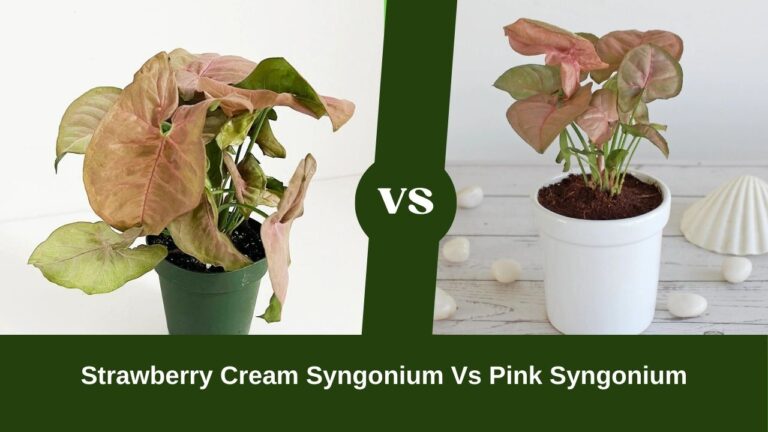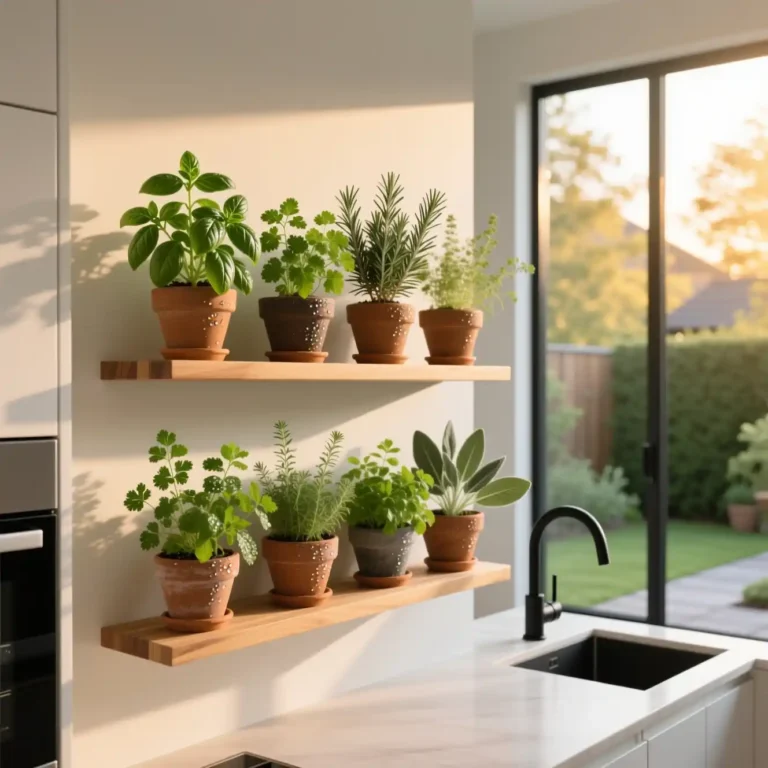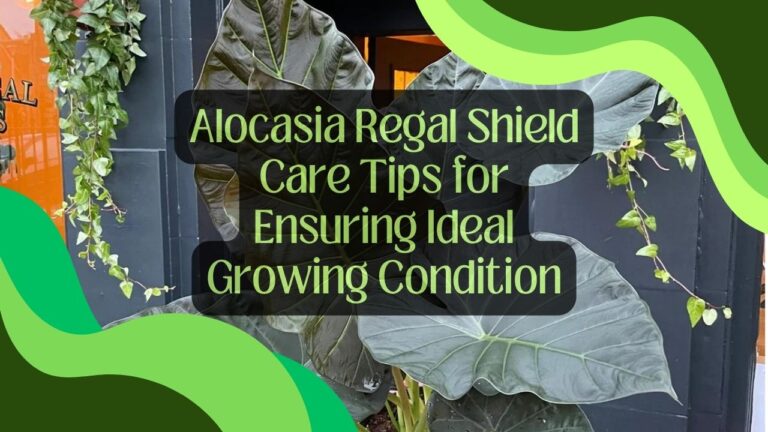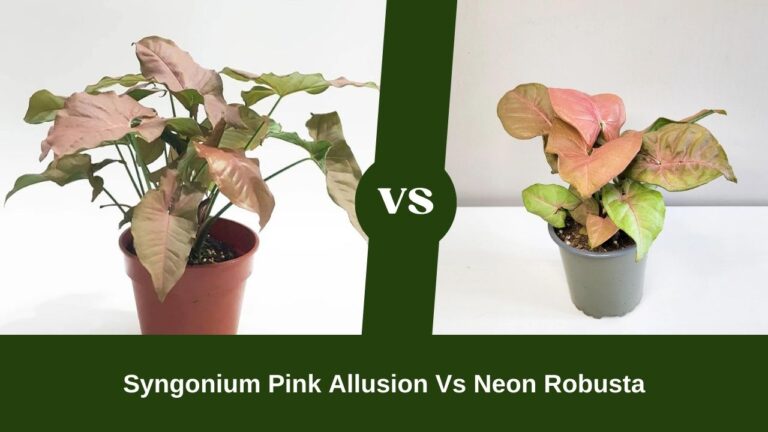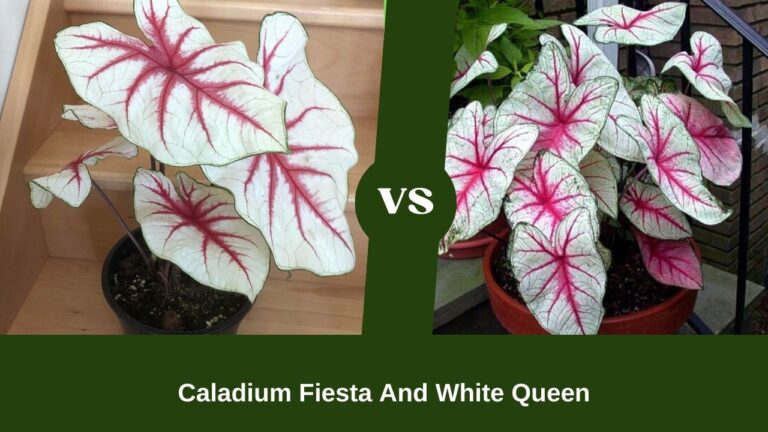Simple Secrets to Thriving Indoor Peace Lilies

The Peace Lily (Spathiphyllum) is a top choice for indoor plants, and it’s easy to see why. Its glossy leaves and elegant white blooms add a touch of sophistication to any space.
But Why the Peace Lily is the Perfect Indoor Plant? Well, beyond its beauty, the Peace Lily is known for being relatively easy to care for. The Peace lily thrives in low to medium light and helps purify the air. It’s also adaptable to various indoor conditions and can tolerate some neglect, making it ideal for busy or novice plant owners.
If you’re considering adding one to your home or already have one, this guide will help you. So, spend two more minutes learning why Peace Lily is perfect for your indoors!
How to Care for Your Peace Lily? (All Peace Lily Caring Traits Explained)
Here’s how to care for your Peace Lily indoors. It’s simple, and if you’re a plant enthusiast, you’ll definitely want to add Peace Lilies to your collection. As you’ll realize how easy they are to take care of!
Ideal Light Conditions
Peace Lilies do well in medium to low light. They prefer indirect sunlight, so place them near a window but out of direct sunlight, which can scorch their leaves.
They can tolerate low light but may not bloom as frequently. If you notice your plant becoming leggy, it might need more light.
Humidity and Temperature
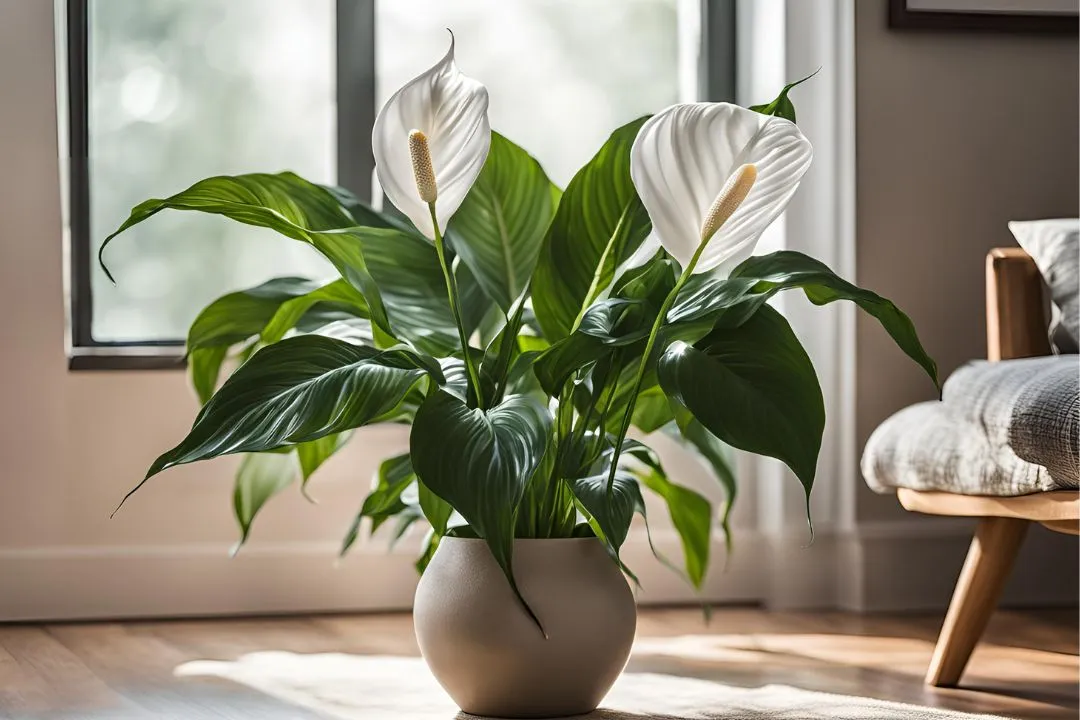
Peace Lilies thrive in high humidity. If your home is dry, especially in winter, consider using a humidifier or placing the plant on a pebble tray filled with water to boost humidity. The ideal temperature range for a Peace Lily is between 65°F and 80°F (18°C to 27°C). Avoid placing it near drafts or sudden temperature changes, as these can stress the plant.
Watering Needs
Peace Lilies prefer their soil to be kept moist but not soggy. Water the plant when the top inch of soil feels dry. Overwatering can lead to root rot, so ensure the pot has good drainage. During the winter months, you can reduce watering since the plant’s growth slows down.
Fertilizing
Feed your Peace Lily with a balanced, water-soluble fertilizer every 6 to 8 weeks during the growing season (spring and summer). Avoid over-fertilizing, as this can harm the plant. Reduce feeding in the fall and winter when growth slows.
2 Expert Tips for Growing Peace Lilies
Keeping your Peace Lily in top shape requires a bit of regular care. Simple tasks like dusting the leaves and trimming away any yellow foliage can make a big difference.
Regular Maintenance
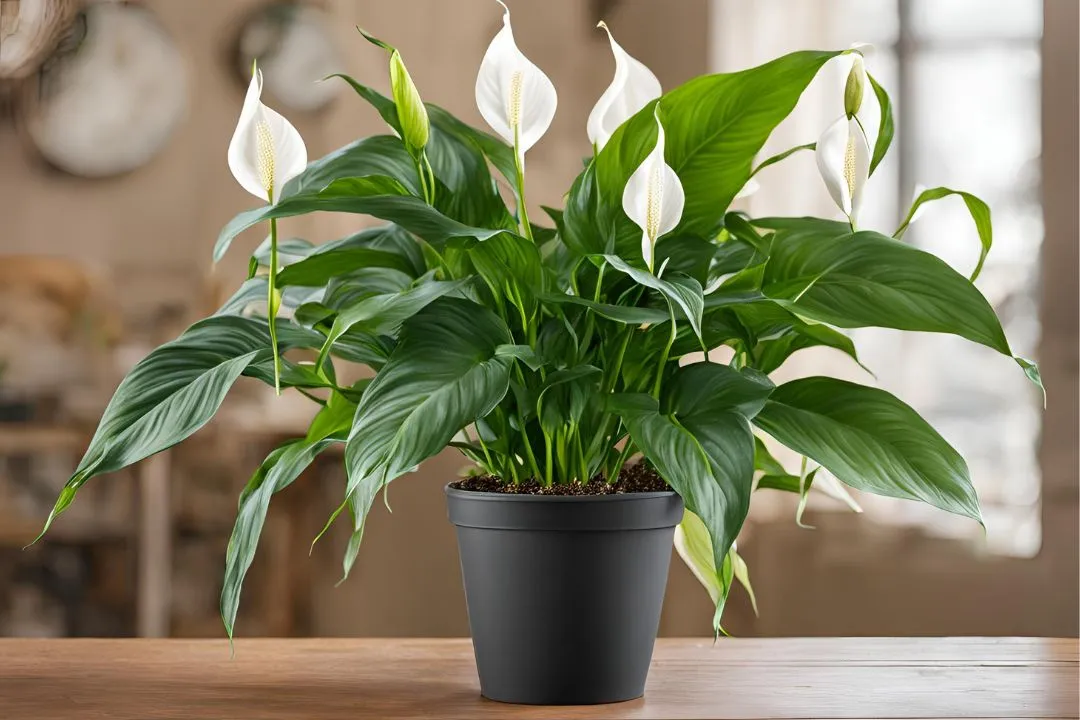
To keep your Peace Lily looking its best, wipe the leaves with a damp cloth to remove dust and help the plant breathe better. Remove any yellowing or dead leaves to encourage new growth.
Flowering
Peace Lilies bloom periodically throughout the year. To encourage more blooms, make sure the plant is getting the right amount of light and proper care. If the plant is not flowering, it might need a bit more light or a touch of fertilizer.
When and How to Repot Your Peace Lily
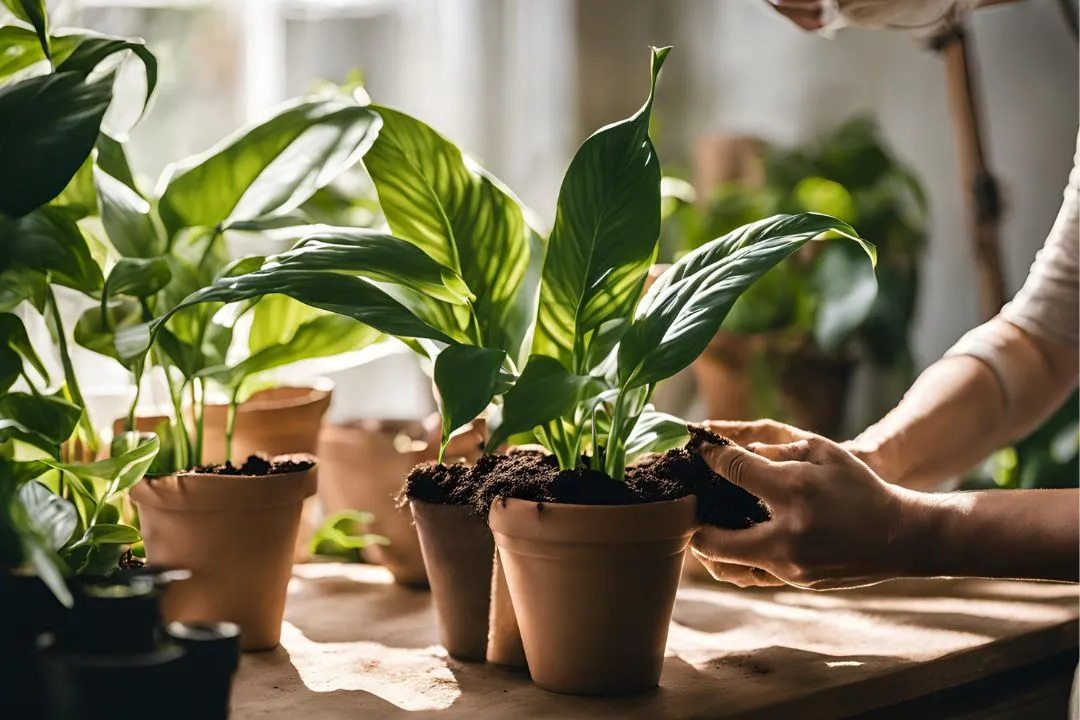
First, know the basics. Repot your Peace Lily every 1 to 2 years, or when it becomes root-bound. Signs that it’s time to repot include slowed growth, roots growing out of the drainage holes, or the plant becoming top-heavy.
How to Repot?
- Step 1: Choose a pot that is 1-2 inches larger in diameter than the current one.
- Step 2: Gently remove the plant from its current pot, being careful not to damage the roots.
- Step 3: Place the plant in the new pot and fill around the roots with fresh potting mix. Make sure the plant is at the same depth it was in the old pot.
- Step 4: Water thoroughly and place the plant in its usual spot.
Common Pest and Disease Problems in Peace Lily
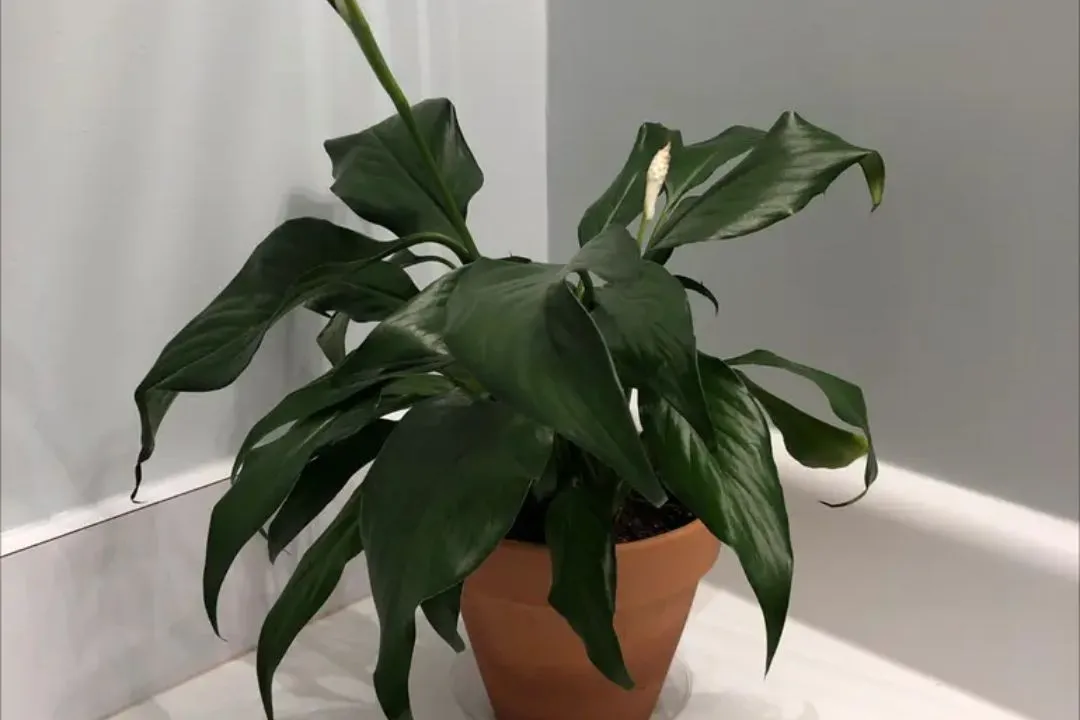
Keeping an eye out for pests and diseases is crucial for maintaining a healthy Peace Lily. Address any issues promptly to ensure your plant remains vibrant and thriving.
Here’s what to know about pests and diseases Peace Lilies can have.
Pests
Peace Lilies can attract pests like spider mites, aphids, and mealybugs. If you see small, discolored spots or sticky residue on your plant, check for pests. Treat infestations with insecticidal soap or neem oil, following the product instructions carefully.
Diseases
Root rot is a common issue caused by overwatering. If you notice yellowing leaves or a foul smell from the soil, check the roots. Trim any affected areas and repot the plant in fresh, well-draining soil.
Fungal and bacterial infections can also affect Peace Lilies. Ensure proper watering practices and good air circulation to prevent these problems.
Buying Peace Lily Seeds: What to Consider?
When buying Peace Lily seeds, consider the following:
- Quality: Purchase from reputable sources to ensure the seeds are viable and healthy.
- Type: Peace Lilies come in various sizes and leaf patterns. Choose a type that suits your space and preference.
- Germination: Peace Lily seeds can be slow to germinate. Patience and proper conditions are key.
FAQs
To help you keep your Peace Lily in top condition, here are some common questions and their answers. Take the advice carefully!
Q: How often should I water my Peace Lily?
Water your Peace Lily when the top inch of soil feels dry. Avoid letting the plant sit in water, as this can cause root rot.
Q: Why are the leaves on my Peace Lily turning yellow?
Yellow leaves can indicate overwatering, low humidity, or nutrient deficiency. Check your watering schedule and humidity levels, and consider fertilizing if needed.
Q: How can I encourage my Peace Lily to bloom?
Ensure your Peace Lily is getting indirect sunlight and is not root-bound. Regular feeding during the growing season can also promote blooming.
Final Words
Taking care of a Peace Lily is like welcoming a calming presence into your home. Its ability to thrive with minimal fuss while delivering stunning blooms and fresh air makes it a unique addition.
The gentle satisfaction of watching your Peace Lily grow and flourish is a simple pleasure that enhances daily life. Embrace this plant’s easygoing nature and let it bring a touch of elegance and peace to your surroundings.
As you nurture it, you’ll find that your Peace Lily is more than just a plant. It’s a source of daily delight and serenity!


